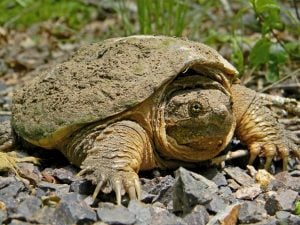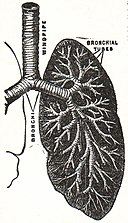A recent study of an unusual snapping turtle with one lung was found to share similar characteristics to humans born with one lung who survive infancy. “These shared traits include an enlarged single lung with a more homogenous distribution of respiratory parenchyma(the gas exchanging tissues), an opposing bronchus that ends where the opposite lung should be and malformations of the spine (such as scoliosis),” said Dr. Schnacher an Assistant Professor of cell biology at Louisiana State University. This study is important because there is very little known about lung morphogenesis.But we do knowthat mutations in genes cause severe, even lethal, lung malformations and lung formation. It is possible that similar genetic mutations are at play in both the turtle and in humans! What an interesting parallel!
The snapping turtle was found in Minnesota and brought to a wildlife rehabilitation center because of a deformity on its shell. However, it wasn’t long until the turtle’s second abnormality was discovered, its singular lung. The turtle was passed down to the hands of Dr. Schnacherand it went through computed tomography(CT) and microCT imaging. The images created 3D models of the area. For comparison, images of a normal turtle specimen were also taken. The comparison was conducted to observe the negative spaces within the lungs– the bronchial tree, lung skeleton, and lung surface. The architecture of the spaces and the patterns inside the lung were compared to the “normal” turtle. In addition, these models also facilitate a visual of specific structures that are very difficult to see in living animals, such as blood vessels and air spaces. What is so innovative about this technology is that qualitative and quantitative comparisons can be made between organisms with absolutely no harm to the specimens! For animal lovers like me this is a huge breakthrough.
So, what was the big reveal? The primary difference between the turtle with one lung and the normal turtle was that the normal turtle had an larger surface area and density value in regard to its gas exchanging tissue. The tissue originates from the secondary airways, thus the 14.3% increase is very signifigant. However, this abnormality had no effect on the turtles survival rate, it only effected aquatic locomotion and buoyancy control. How does this relate to humans now? The turtle represents an example of a non-fatal congenital defect and a clear pathway of how the turtle adapted to compensate for it. This increased understanding of soft tissue structures reveals key breakthroughs to one day understand and improve diagnoses in humans! I think the future holds big answers, what do you think?




Leave a Reply